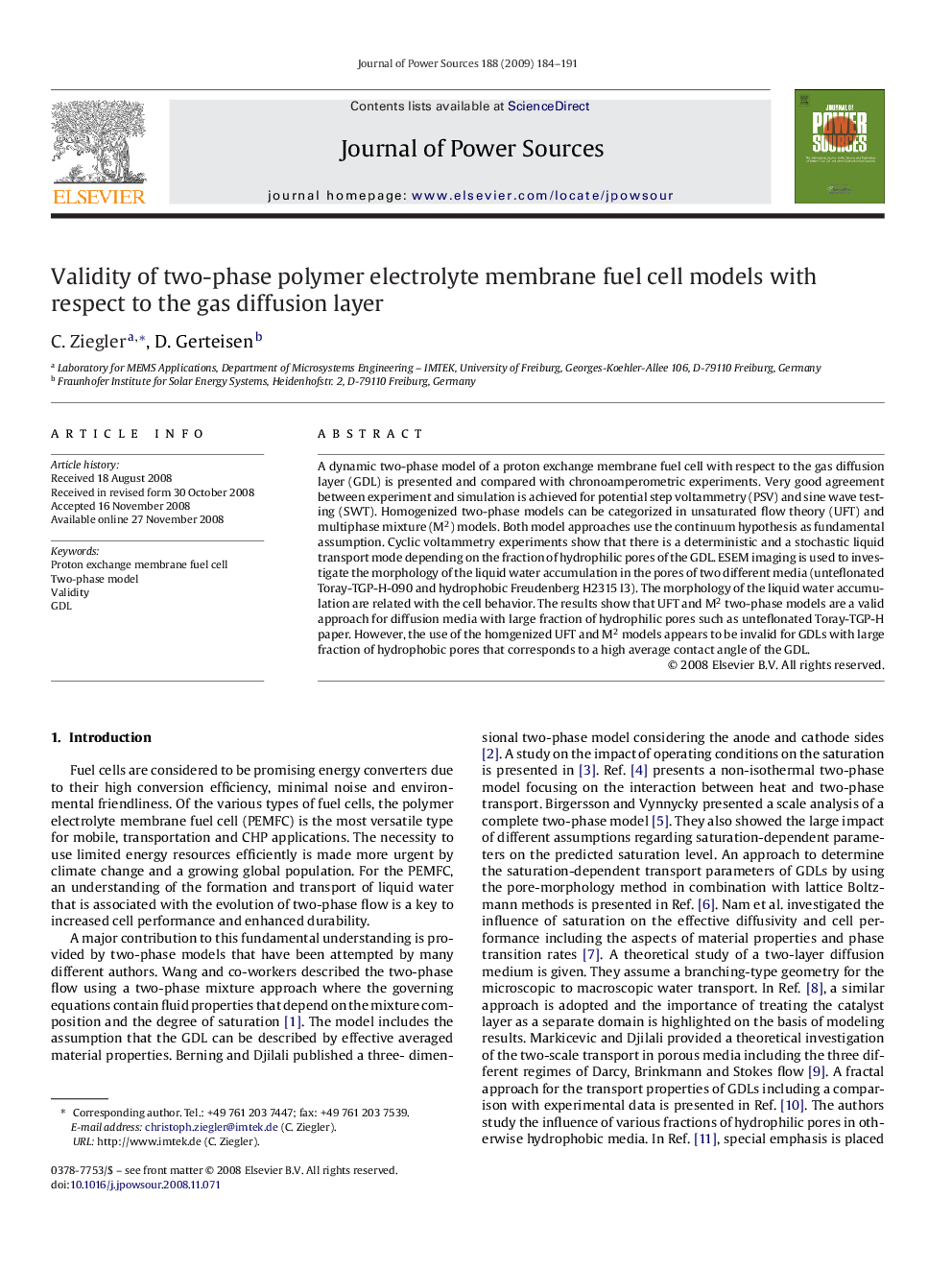| Article ID | Journal | Published Year | Pages | File Type |
|---|---|---|---|---|
| 1294332 | Journal of Power Sources | 2009 | 8 Pages |
A dynamic two-phase model of a proton exchange membrane fuel cell with respect to the gas diffusion layer (GDL) is presented and compared with chronoamperometric experiments. Very good agreement between experiment and simulation is achieved for potential step voltammetry (PSV) and sine wave testing (SWT). Homogenized two-phase models can be categorized in unsaturated flow theory (UFT) and multiphase mixture (M2) models. Both model approaches use the continuum hypothesis as fundamental assumption. Cyclic voltammetry experiments show that there is a deterministic and a stochastic liquid transport mode depending on the fraction of hydrophilic pores of the GDL. ESEM imaging is used to investigate the morphology of the liquid water accumulation in the pores of two different media (unteflonated Toray-TGP-H-090 and hydrophobic Freudenberg H2315 I3). The morphology of the liquid water accumulation are related with the cell behavior. The results show that UFT and M2 two-phase models are a valid approach for diffusion media with large fraction of hydrophilic pores such as unteflonated Toray-TGP-H paper. However, the use of the homgenized UFT and M2 models appears to be invalid for GDLs with large fraction of hydrophobic pores that corresponds to a high average contact angle of the GDL.
